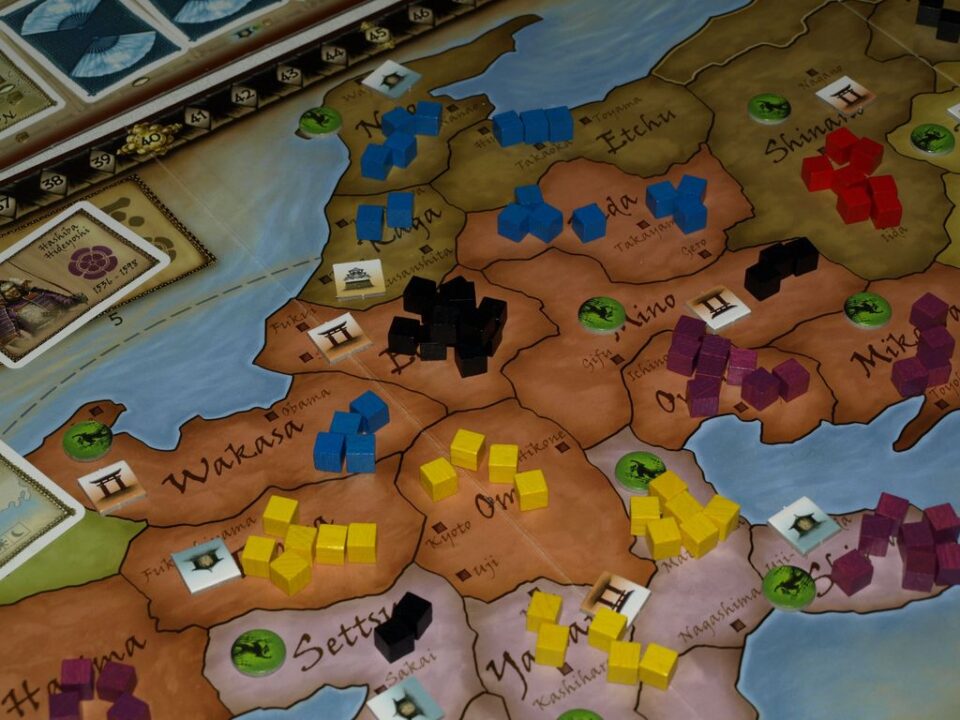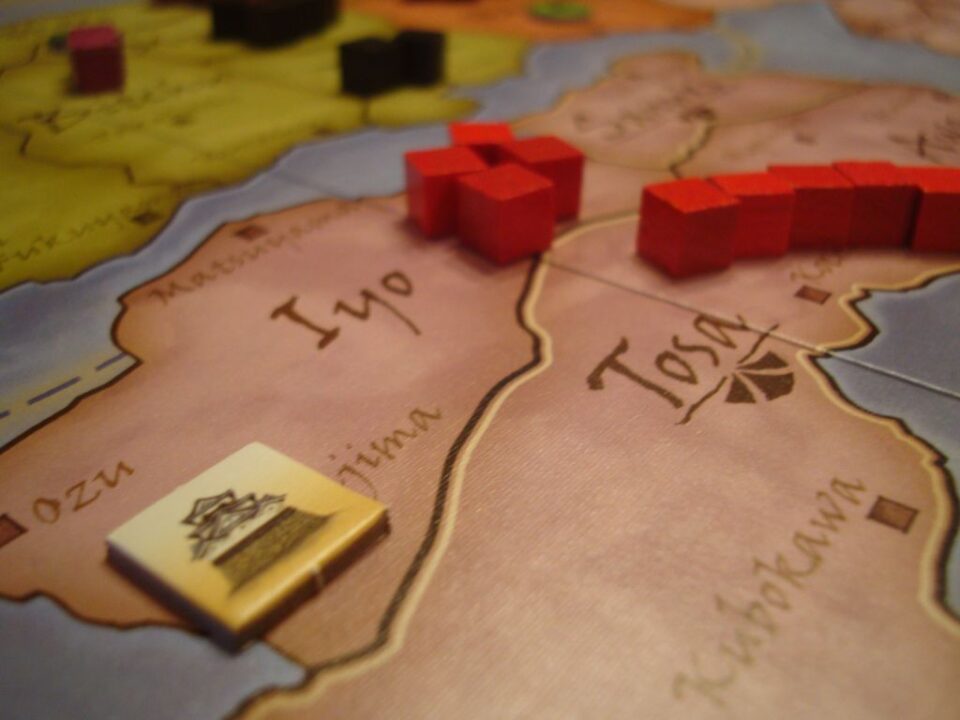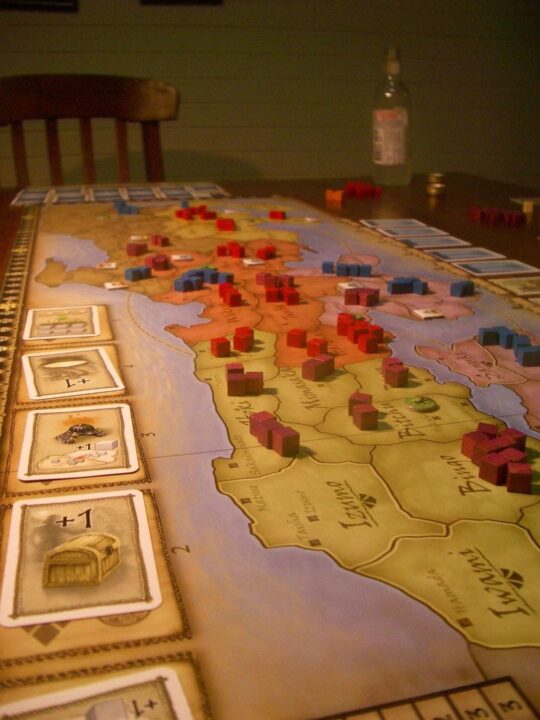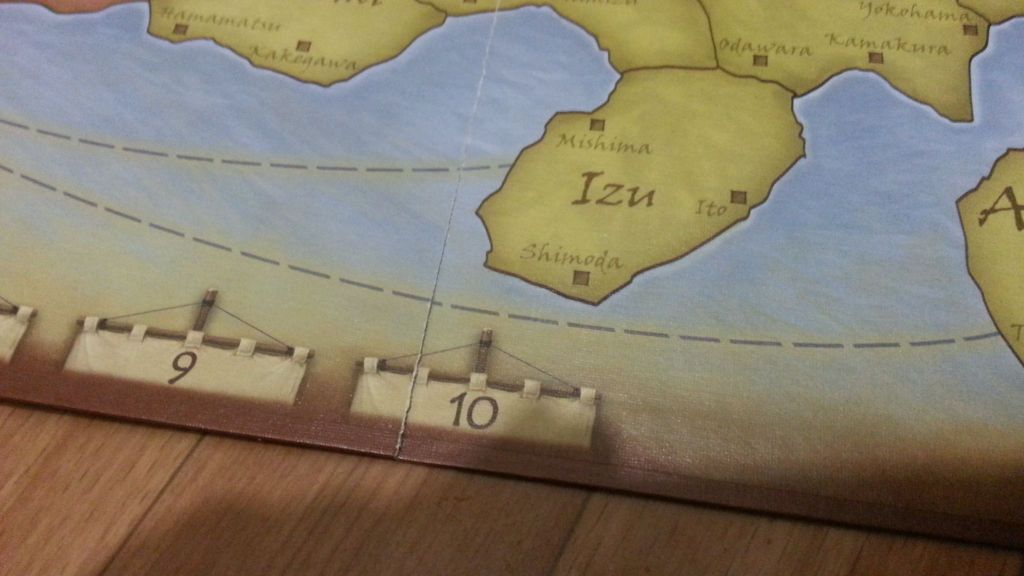Every now and then, a board game makes my friends yell, laugh, and question their life choices—all in one night. This review tackles one of those games, where wooden cubes tumble, alliances crumble, and your mighty army sometimes ends up stuck in a tower. Strap in. It’s not always fair, but boy, it’s fun.
How It Plays
Setting up
First, give everyone a player board, some army cubes, and a starting province. Put the big map in the middle and throw the suspicious-looking battle tower nearby. Shuffle event and province cards. Each player picks their color—no fighting over red, please!
Gameplay
Each round, players secretly plan where to build, tax, and attack by putting action cards face-down. Reveal all at once and judge your friends’ choices. When you fight, chuck the armies in the tower—whatever comes out fights for glory. Stack your provinces with castles or rice, because winter is coming (yeah, wrong series, still applies here).
Winning the game
After several rounds, and probably a few debates, count up your points. You score for provinces, castles, temples, and—if you’re not starving—rice. The most points wins, but the real prize is surviving the battle tower’s betrayal.
Want to know more? Read our extensive strategy guide for Shogun.
The Battle Tower: Shogun’s Dicey Deal with Randomness
If you’ve ever tossed a die with more hope than skill, you’ll understand my love-hate relationship with the battle tower in Shogun. This chunky, cardboard contraption is the game’s heart—and also, sometimes, its heartburn. Here’s how it works: armies (colorful cubes) go into the tower, they bump, tumble, or just get stuck, and then SOME of them fall out the bottom. It’s a bit like dropping your fries and guessing which ones your dog will eat before you can grab them. It keeps things spicy, but also takes some control away from you.
I’ve had epic moments when half my army ‘vanished’ to cube limbo, only to reappear a round later and swing the battle. Sometimes, the tower spits out cubes that had disappeared three battles ago—like it’s snacking on my hopes and then burping them back at the worst time. Randomness is real here! If you love pure strategy and want every decision to matter, you might find the tower a tad rude. I laughed a lot, but also groaned when luck squashed my clever plans. I prefer strategy over chance, so I wish Shogun gave players a bit more control during battles. Still, the tension of not knowing is great for a laugh—and yelling at the tower is basically required.
So, the battle tower brings wild randomness, memorable moments, and a dash of chaos—maybe a bit too much chaos for serious planners. Next up, let’s talk about how you can actually outsmart your friends in Shogun (when the cubes allow it) with a look at strategy and player interaction!

Strategy and Player Interaction in Shogun: Scheming for the Win
When I play Shogun, I always feel my brain heat up about two rounds in. This is not a game where you can snooze your way to victory. Each turn, you secretly plan out your moves using your player board. Will you build, tax, or try to snatch that province from your buddy? In the wise words of my friend Greg: “If you guess what Jamie will do, just do the opposite.” (Greg is currently winless.)
The best part for me? Nobody wins by turtling in a corner. You have to keep an eye on everyone’s plans (and sneak in a betrayal when the timing is right). It’s basically the board game version of trying to steal the last slice of pizza—only with less cheese and more samurai swords. Alliances form and break faster than anyone can say “harakiri.” Planning is key, and you always have to weigh: Should I defend my castle, grab a rice field, or poke the angry bear next to me? One mistake, and you could go from shogun to “some guy without land.”
Unlike games where everyone mutters to themselves for hours, here you have to talk, bluff, and make promises you may or may not keep. That mix of open scheming and hidden moves keeps the table noisy and tense, but in a fun way. Oh, and if you’re looking for a quiet experience, this is not it!
Next, I’ll tell you if Shogun drags on like a samurai soap opera or gallops to the end like a ninja on an energy drink!

How Long Is a Feudal Power Trip? Shogun’s Game Length and Pacing
Let’s be honest: some board games drag along like a sushi conveyor belt at 1am, and some zip by so fast you forget to refill your drink. Shogun, in my experience, sits somewhere between these. When my friends and I gathered (with snacks, of course), our games clocked in at around two to three hours. That’s a hearty evening commitment, but it doesn’t outstay its welcome—unless you’re playing with indecisive folks who treat their turns like secret love letters.
The pacing depends a lot on your crew. If everyone knows the rules, things move at a solid pace. The planning phase can feel like a tactical scramble, and you’ll definitely have those moments where someone is deep in thought, weighing the cost of war against the friendship they might lose over a rice paddy. There aren’t too many slowdowns from fiddly rules, which I’m thankful for. Instead, Shogun keeps the tension high with each turn, as players stare at maps and try to outwit each other without flipping the table.
I’m happy to report that there’s very little downtime, even with five players. You’ll always be watching what others do, because your plans can fall apart faster than a cheap katana if someone else moves first. Overall, Shogun keeps up the tempo, making you feel like something important is always about to happen.
If you want to know whether Shogun looks as good as it plays, the next part is the real eye candy: I’ll chat about its component quality and board design!

Shogun’s Components & Board: More Than Just Eye Candy
Okay, let’s talk about the bits and boards in Shogun. First, the board is jumbo-sized and, honestly, a conversation starter at game night. Every time I unfolded it, someone asked, “Whoa, are we re-enacting history or planning a road trip to Japan?” The map is clear, with regions that stand out, not some color-blind-nightmare, so everyone knows exactly which province they’re about to lose.
The components themselves are chunky and built to last. I’ve dropped a cube or two (or twenty, who’s counting?), and still, nothing cracked—except my pride when I lost Edo. The cards are a decent thickness, and the player screens are sturdy enough to survive the occasional snack spill. The tokens feel nice in the hand, and I am happy to report that the battle tower is a total showstopper, both in looks and in the way it dumps the cubes out with dramatic flair. It’s not just for show; it’s the heart of the action!
However, storage is a bit of a pain. The insert feels like it was designed during a lunch break. Expect a little chaos in the box after your first game—think “post-battlefield,” not “Marie Kondo.”
All in all, if you like games that look great on the table and don’t fall apart after a few rowdy sessions, I totally recommend Shogun. Just make sure you don’t mind a little box mess after all the excitement!

Conclusion
So, that’s my wild ride through Shogun. The battle tower made me question my life choices, but the strategy and sneaky moves brought me back for more. It’s long, but it never bored me. The pieces and board look sharp, even if the box insert is a cruel puzzle. If you like a mix of chaos and careful planning (and don’t cry when luck punches you), Shogun might be your next favorite. That wraps up the review—now if you’ll excuse me, I have cubes to pick out of my couch.




